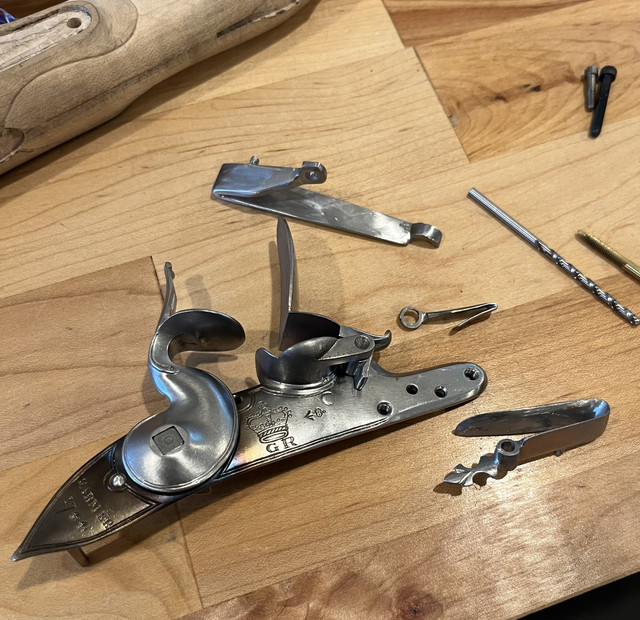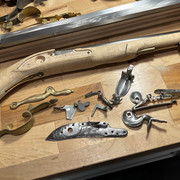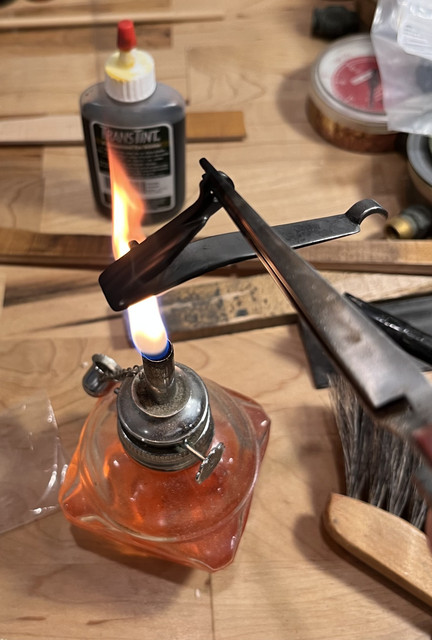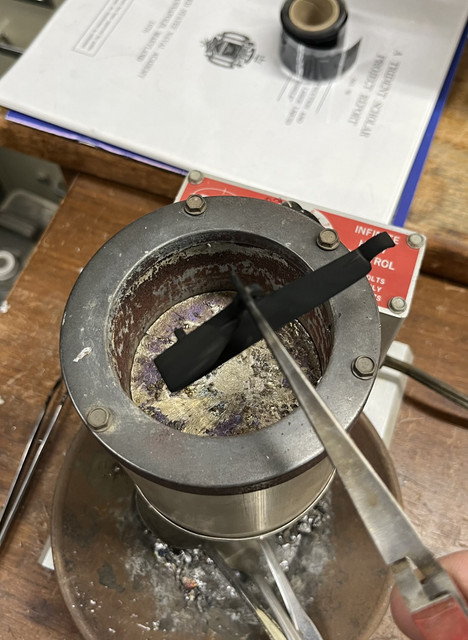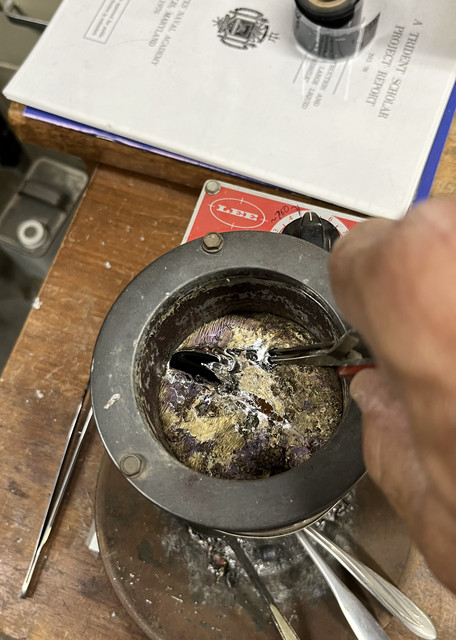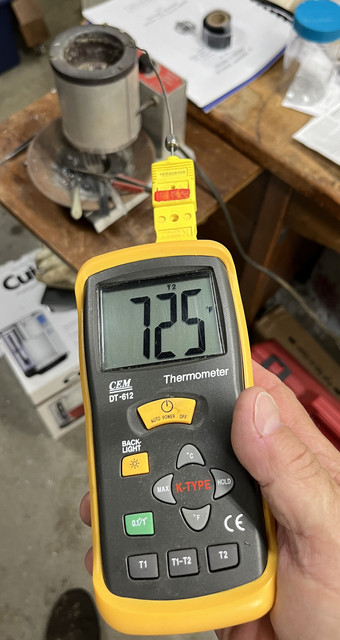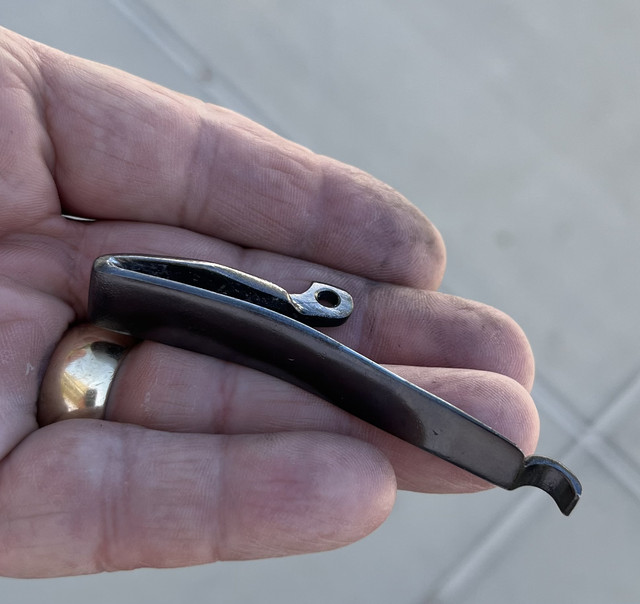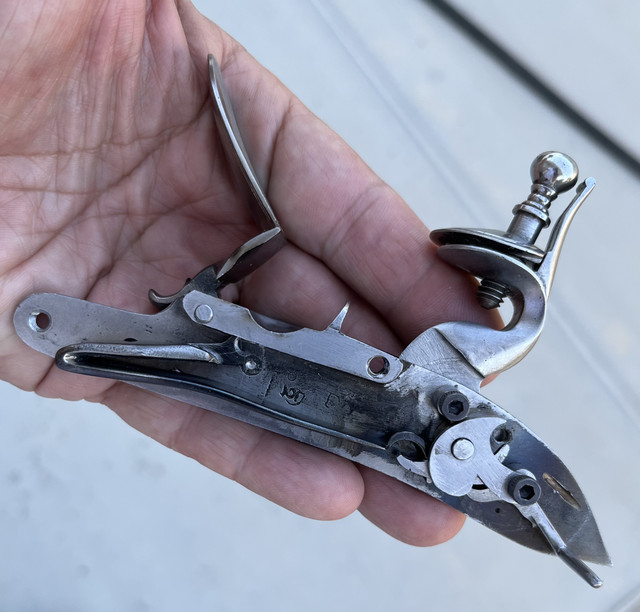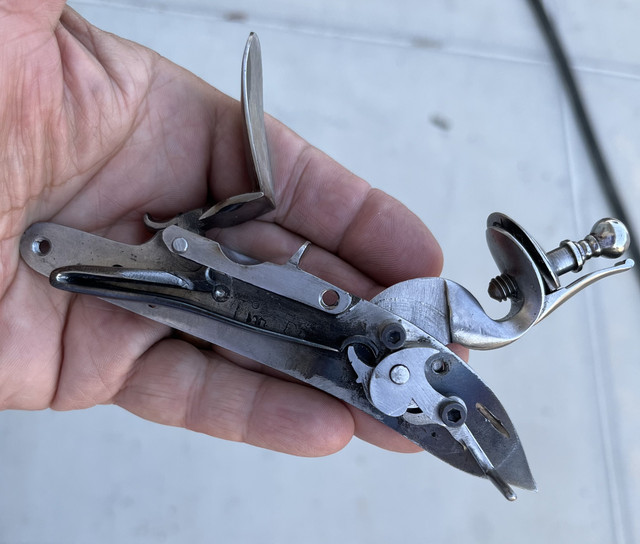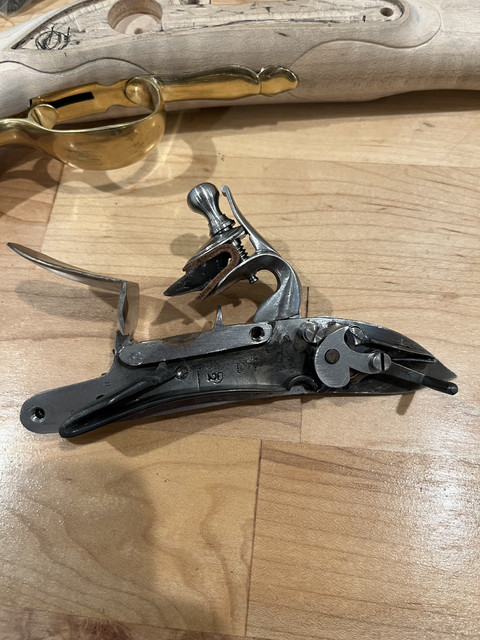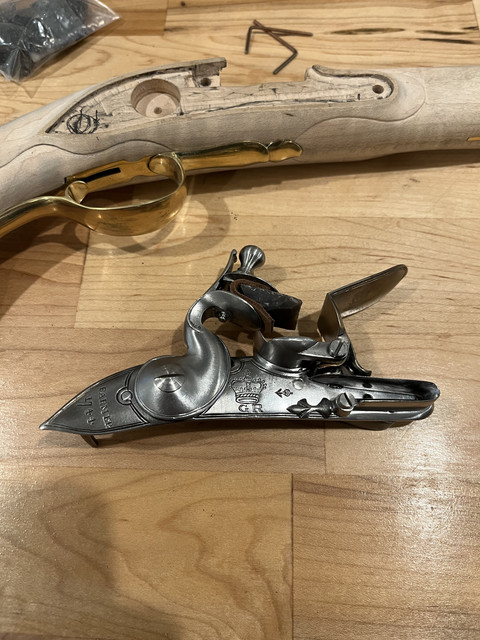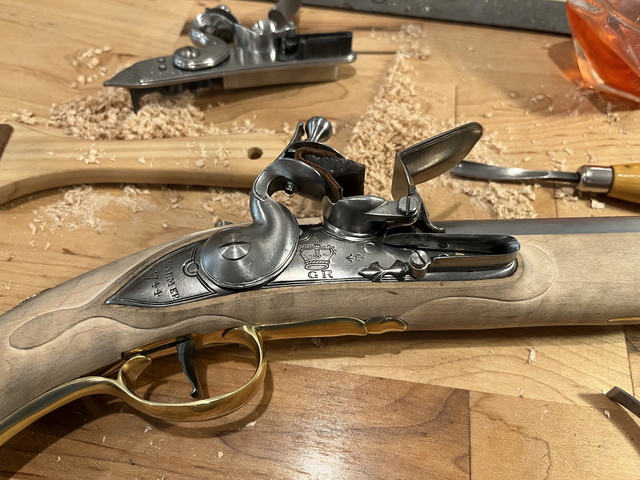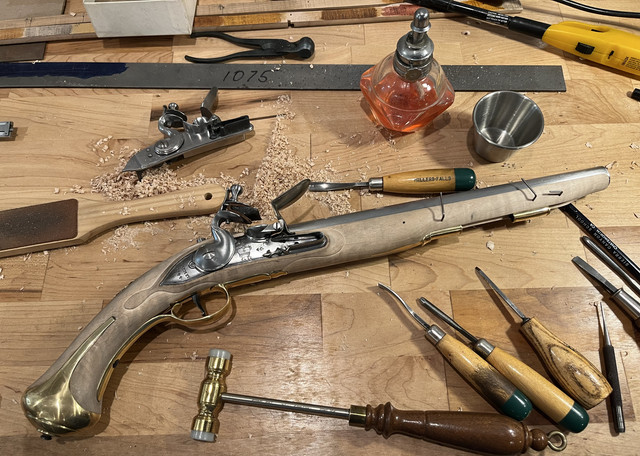OK...so today was the day to try my luck on three irreplaceable cast springs... sear, frizzen, and main. I was not really worried about the sear spring. If I needed to do so, I have made a fair number of those out of sheet spring stock (and even pallet steel strapping). So not much of a problem to replace if the cast one failed. The frizzen spring is a slightly bigger deal to make from scratch but not impossible. I would just need to weld on the little decorative finial before heat treating and the shape is not too tough to bend. I was mostly worried about the main spring. I am not good at making those....yet. So I was hoping I would not have to start my training in the middle of this pistol build.
I've done a few springs in the past with the Prest0-lite acetylene torch for the initial heat and quench but decided to try doing that first step in a little more precise fashion this time. I planned to take the springs up to 1550 F or so in my melt furnace. But because of the time it would take to come up to temp, I didn't want the polished springs to fire scale. So I painted them with the same fire scale coating I used on the little rifle lock tumbler repair. Here are all there springs with the coating drying.
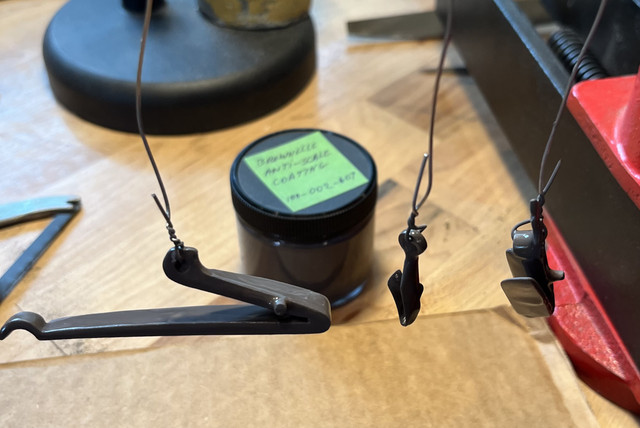
Once dry, I put the springs in the furnace and ran them up to 1550F and then did a quench in room temperature brine water.
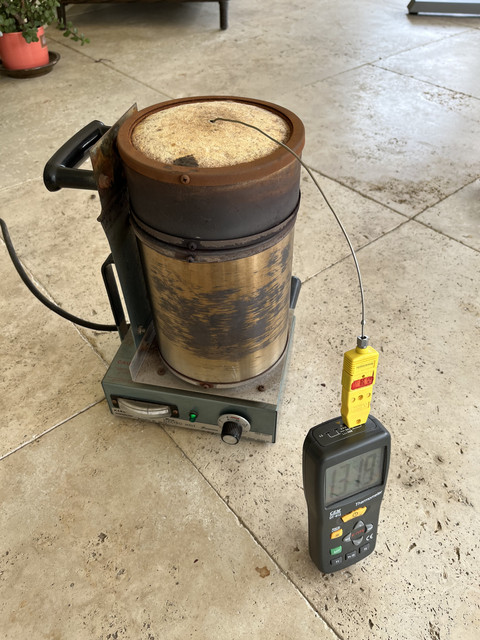
The springs looked great after I fished them out of the brine (no fire scale at all) but were not hard enough. I could still bite a little with a file. I postulated that either the coating slowed down the quench a bit (not too likely as the coating explodes off the surface on contact with the quench water) or I did not let the springs soak out at temperature long enough when the furnace hit 1550. So without re-coating, I put them all back in the furnace and ran the temp up to 1600. Another quench....still not hard enough for my liking. Back in the furnace one more time. This time I took the temp up to 1660 and held it for a good 15 minutes before another quench in fresh brine. Bingo ! All three springs were as hard as glass.
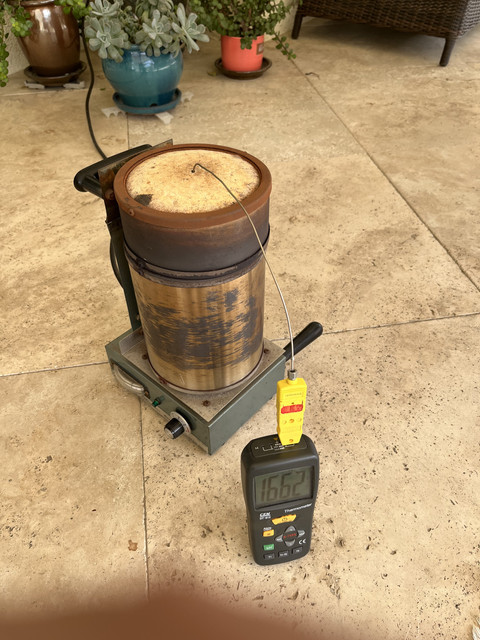
Then I cleaned up all the surfaces (there was some fire scale now) and drew them all in a lead bath at 755 F. (It took a bit to get the lead pot dialed into the right temperature) I let the springs swim around in the molten lead for about 20 minutes and then fished them out and let them air cool.
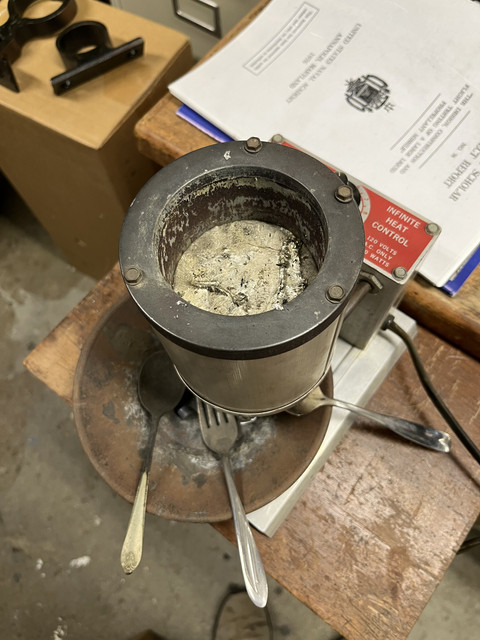
After I got all the bits of lead off the springs, I put the frizzen and sear springs in the lock and both worked great. Because of the shape of this particular main spring, I had a heck of a time getting any of my several spring compressors to work. Every one I tried slipped off the spring in one way or another. I finally had to grind a shoulder on the fixed end of the spring parallel to the working arm. Once I did that, one of my spring clamps worked. I got the main spring compressed far enough to get it installed (without the spring breaking


) only to discover that, at rest, the toe of the tumbler was just about 0.010" too short and the spring would pop off the tumbler. So....now I need to add a bit of weld steel to the tumbler before I can exercise the main spring in the lock and make sure it will handle more than a few cycles....
